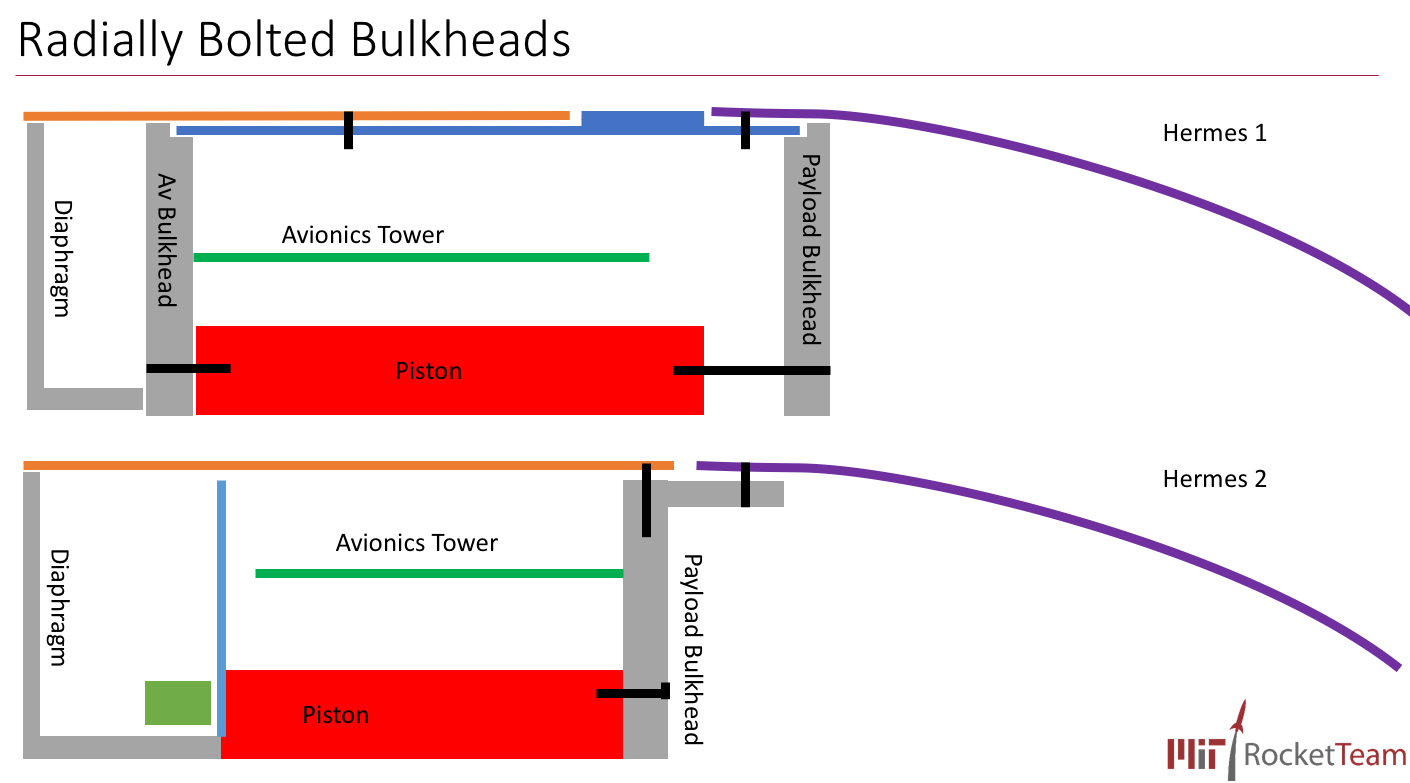A design change was made to the Avionics Bay and the Payload area of the rocket in order to better constrain the avionics and payload bulkheads while not loading the piston from the back (by the payload bulkhead).
For the payload bulkhead, this change led to the possibility of bolting/riveting the bulkhead in place from the side and through the nose cone or body tube. This allows for the payload to still be fixed in place and act as a support structure for all the hardware in the nose cone while not relying on piston to hold it up. Because of this, the piston is free from the load of the payload bulkhead as it will NOT be fixed to it.
In order to constrain the avionics bulkhead, a plan was made to bolt/rivet it from the side through the body tube. This allows for the piston to still be fixed to the avionics bulkhead and be constrained.
To fix the coupler tube in place, two options were explored:
The coupler tube would be bolt to a structural ring on the inside of the body tube that would hold it in place. This is the preferred plan.
Part of the coupler would go in between the body tube and where the avionics bulkhead is being bolted in order to constrain both of them with fewer bolts. However, the amount of load put on those bolts from the torquing of the upper sections of the rocket is thought to be less than ideal.
